Yes, You Can Teach Lean in Engineering Schools
May 30, 2022
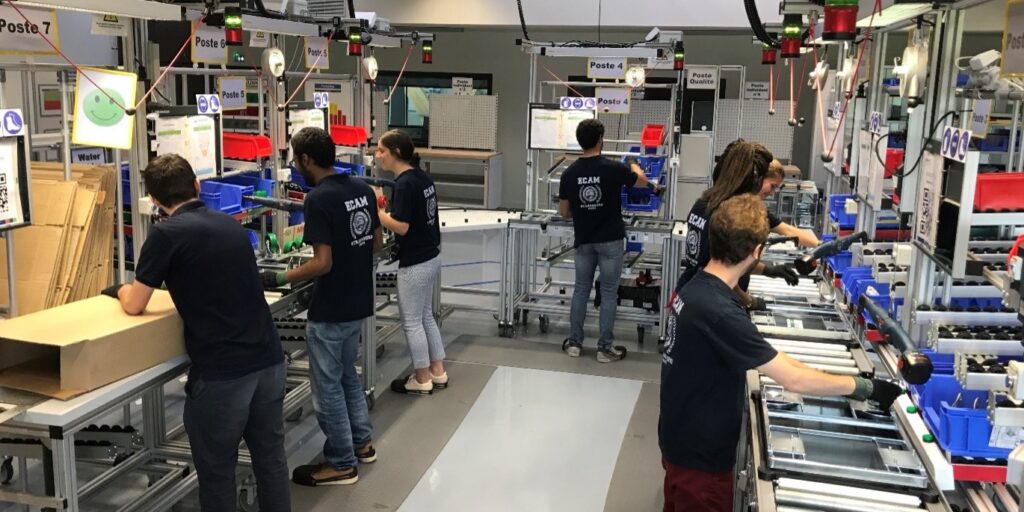
NOTES FROM THE GEMBA – The author visits a private engineering school to learn about their approach to teach Lean Thinking and apply it to their own work.
Words: Catherine Chabiron, lean author and member of Institut Lean France
The private engineering school I am visiting today is in Strasbourg, eastern France. ECAM Strasbourg-Europe is teaching lean principles and techniques in labs and providing green and black belts certification. But they have taken their offering one step further. Confronted with the risk of limiting their teaching to tools, they are trying to experiment the thinking system within the staff.
As Remi Porcedda, Head of the Industry and Sustainable Development Department, puts it: “If we want to teach our students lean, we’d better use lean ourselves and be lean on a daily basis, as a group, as a company.”
This is what I have come to see.
THEY HAVE CUSTOMERS AND CHALLENGES, LIKE EVERYONE ELSE
Remi Porcedda and Richard Komurian, Head of Innovation and Development, greet me at the entrance of ECAM Strasbourg-Europe’s brand-new building outside Strasbourg. As we cross the central hall, which looks and sounds very quiet, I ask a few questions about the history of the school and its performance in the French education landscape.
Remi is quite open about it. He tells me that an engineering school like ECAM Strasbourg-Europe has to deal with the same challenges other organizations face. In their case, they need to: satisfy local industrial companies that need highly skilled and adaptable engineers, who are fluent in both English and German (Germany is right next door); create a great user experience for their students while developing their skills; foster loyalty and further revenue from both companies and students potentially returning for vocational training. Not to mention that happy and successful alumni will increase the credibility and reputation of the school and help with the recruitment of new students.
ECAM Strasbourg-Europe has one additional challenge: it has grown tenfold since it was created in 2010 (today, 600 people study here). Right from the start, the question has been whether, as a new venture, they could survive successive global crises, while managing the complexity generated by the increasing number of students (depending on the course, each student will study at ECAM for three or five years). Indeed, another school that was created around the same time as ECAM Strasbourg-Europe and focused on IT and Digital did not make it.
DEVELOP PROBLEM SOLVING SKILLS
First, Remi and Richard take me to the school’s Executive Committee obeya. Remi has years of experience implementing kanban flows in industry and is a firm believer in the importance user experience and genchi genbutsu, a value he developed during his time in the services and IT sectors. He has been a strong advocate of Lean Thinking at ECAM Strasbourg-Europe since he arrived.
The Executive Committee meets every Monday. All department heads attend the meeting, whether they are in charge of teaching, innovation or school administration. The boards in the obeya show the school’s vision, which has three main pillars: recruit and bring people together, ensure quality of teaching and student experience, and develop business. For each of these elements, projects are being run to improve outcomes in the medium term, while schedules, KPIs and top-priority corrective actions are leveraged to tackle short-term problems (from one week to the next). As issues are unearthed and their root causes addressed, the improvement ideas board gets full of suggestions.
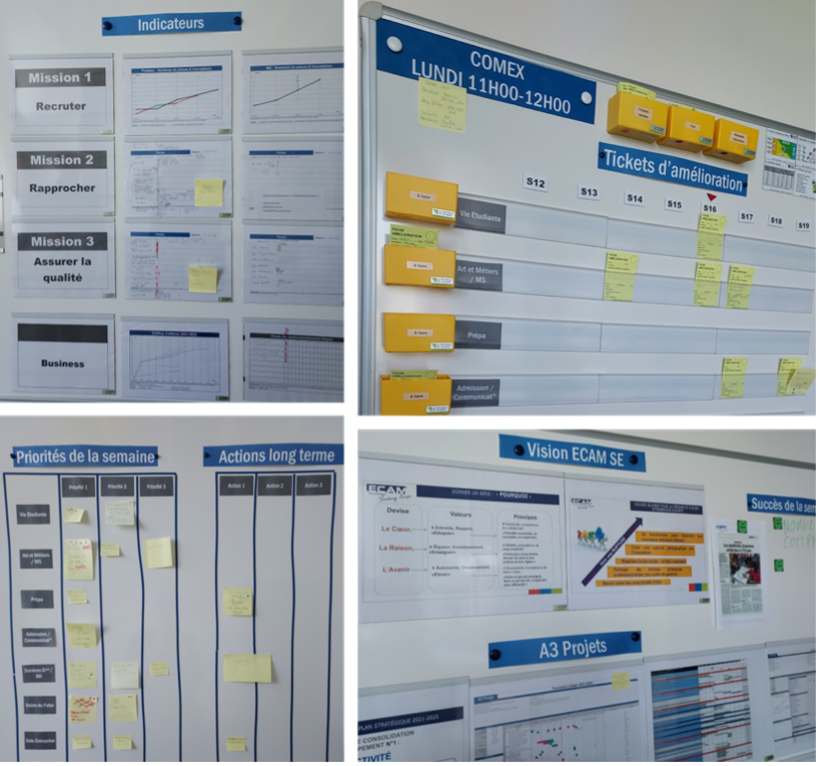
There is a direct link between the discussions taking place in the obeya – and the problems they highlight – and the continuous improvement boards located in all departments: whether it’s a delay marking written tests or an issue with recruitment, problems are taken up by the relevant area.
As Remi, Richard and I observe the boards in the obeya, we discuss problem-solving skills. The way they use A3s, it turns out, is geared more towards reporting on a project than on encouraging problem-solving and critical thinking around challenges (agreeing on the problem, analyzing root causes, and reaching a consensus on the necessary countermeasures). Richard listens intently and concurs: “Most engineers I have encountered lack those skills. They push for the solution they have in mind, rarely taking the time to stop and investigate root causes.” Richard is a former R&D Director from the automotive Industry and has very recently joined ECAM Strasbourg-Europe. A few years ago, he was a member of the French Lean Engineering Academy, a community of practitioners learning from each other and taking turns hosting the group and showcasing their lean experiments.
This point is key in an engineering school, especially since ECAM Strasbourg-Europe aims to teach technical knowledge and skills but also the ability to understand and develop sound interpersonal relationships for better collaboration. Problem-solving based on A3 Thinking is a great way for a teacher to see what the student has in mind for the next step in their investigation or discussion. Teachers and admin staff have regular task forces to tackle issues raised in the obeya; shouldn’t they experiment with tracking the issue on a storytelling A3? An example of the problems they work on seems particularly interesting to me: when students take a test to check their competences, teachers end up with a big batch of 180 tests to mark. So how do you turn to smaller batches to reduce the lead-time (students hate to wait for their marks and the target is no more than four working days)? Smaller batches generate other issues, however: some students may be tempted to “cheat” and ask the previous batch of exam-takers what topics the test focuses on. Countermeasures could be to change the problem input data but not the problem itself, or to move to multiple choice quizzes.
Furthermore, could reverse teaching help students to develop those key problem-solving skills? We discuss with Remi how teachers could propose a real-life problem to solve, let students define what they do know as this stage and what they need to learn, and have them investigate the issue on an A3.
COLLABORATION AND LEARNING FROM EACH OTHER
We are now back in the central hall, as students start pouring out of their classrooms and labs. All teacher and administrative staff offices overlook the hall. The large windows say a lot about how accessible teachers are: any student can stop by, check whether the teacher is around (there is a visual management to that effect on each door), and pop in to ask a question.
Sonia Wanner, head of the school, has now arrived. Quickly joining our lean conversation, she says she is a firm believer in learning from real-life experiments.
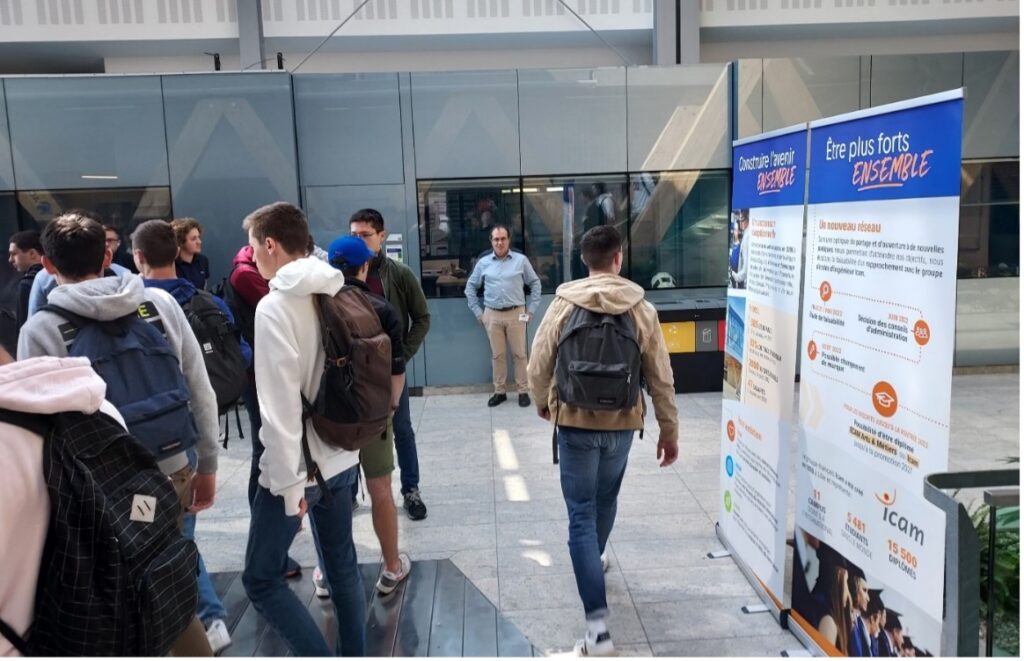
“We all have constraints,” she says. “We need to understand them and work together on the trade-offs to achieve sustainable growth. For instance, a teacher may agree to modify a schedule to take into account the availability of labs while keeping the momentum in their training program.”
I ask how school staff at ECAM Strasbourg-Europe learn from each other and collaborate. “Anyone can attend a teacher’s course, including other teachers,” Sonia explains, “even though this is often perceived as uncomfortable by some. We also regularly change the team mix in offices to give everyone a chance to seat next to a new person and learn from them.”
But true collaboration between staff members mainly stems from the priorities defined in the obeya, based on the discussions the school has with students. “For example, criteria for marking may not be explicit enough for the students, or we have not been clear enough on the homework we expect from them,” Remi chips in. “We lead regular task forces to solve this kind of issue together.”
Remi and Sonia give me a few other examples. Preventive maintenance on costly lab equipment has increased their availability to students, not to mention the reduction of repair costs. New standards for staff onboarding help to clarify expectations, thus shortening the learning curve.
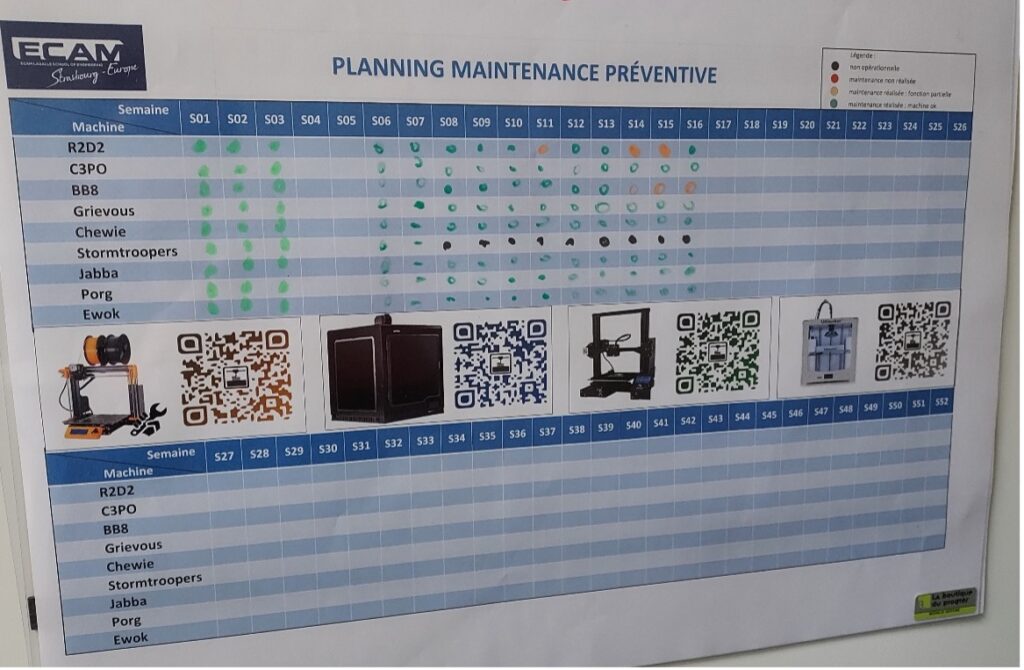
When teachers complain that recruited students are not at the expected level, they are invited to join the open-doors events and/or the selection board, to help enhance the selection criteria. In this context, Sonia is objective enough to know that ECAM Strasbourg-Europe needs to be very attractive, both by making a great first impression and providing an excellent student experience to make up for the lack of famous alumni that is typical of a young institution. Sonia tells me: “Our school is very young, we have fixed costs to cover, and we need to be right-first-time if we want to recruit at the expected pace.”
They also have a teaching innovation department that promotes monthly meetings to learn from new angles and discuss what could be changed in the way they teach or assess competences.
LABS AND TEACHING ABOUT TOOLS
We have now reached the labs, the ideal setting to teach students about lean tools, the logic and intent behind them, and the interconnections that exist between them. Remi shows what a cupboard looks like before a 5S exercise (something they also do on shared directories using PCs): “We don’t want students to do a spring cleaning. Instead, I try to show them how mastering one’s workstation is the first step towards identifying abnormalities and applying jidoka,” he says.
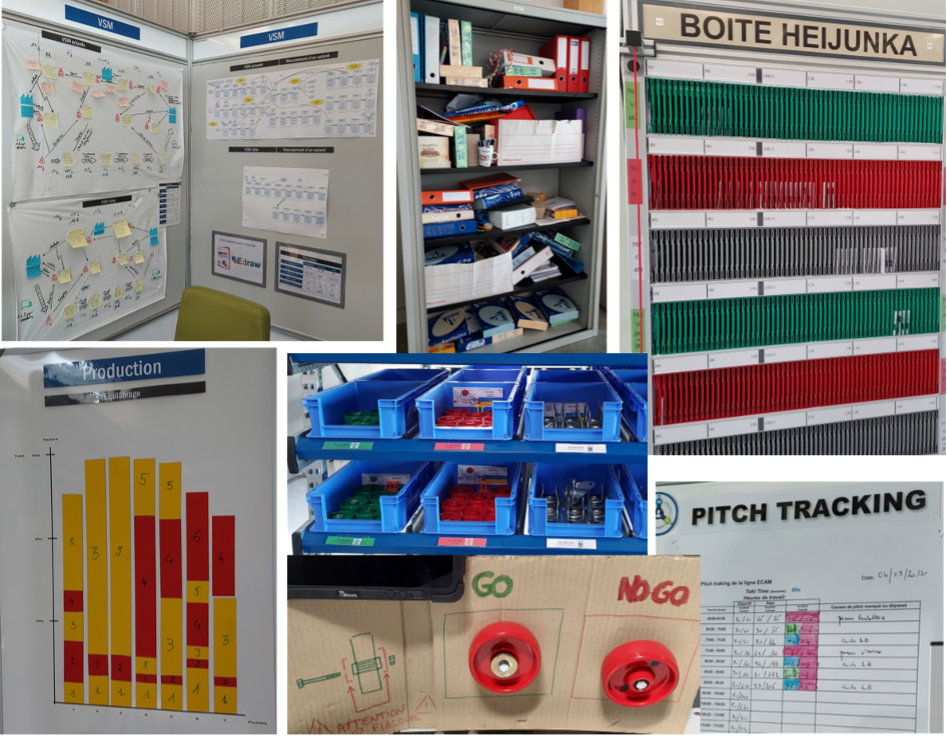
In the production lab, I see a U-shaped cell equipped with an heijunka box, Kanban, small train, standard sheets, supermarkets, production boards, and so on.
This is a good way for students to familiarize themselves with lean concepts, play production runs, discover the virtues of small batches, or experiment with flexible production cells. These tools help them to learn how to calculate takt time, define a Bill of Materials, or measure routings for a given finished product. As we stand in the Research lab, in front of posters designed by students to describe a research project, Richard is already thinking of having them use lean concept papers on research projects (that betrays his Lean Engineering Academy background).
However, such labs can be found in most engineering schools. To quote Peter Ward in this 2016 article, “Out of context, lean is pretty much meaningless”. There is always a risk, Peter warned us, that lean education is reduced to tools. This is why I am so eager to hear what ECAM Strasbourg-Europe is doing to incorporate Lean Thinking in its own work. Indeed, their company-wide lean experiments are incredibly important: it provides real-life cases to feed on, it fosters collaboration and the development of problem-solving skills, and allows students to autonomously manage expensive resources, such as labs.
Importantly, leaders are present at the gemba. Sonia has been touring rooms to check on equipment, observing continuous improvement boards to provide the team with a boost of energy and help them stay focused, and monitoring the student onboarding process to ensure everything happens right-first-time. Across the workforce, there is alignment on the school’s vision, largely thanks to the regular discussions taking place in the obeya. ECAM’s storytelling is refined every week and relayed during gemba walks: explain to both students and staff what the organization’s objectives are, listen to complaints, agree on the problems to be solved, and challenge the team on their work. In other words, it’s an opportunity to teach lean as a thinking people system, rather than a mere set of tools.
THE AUTHOR

Catherine Chabiron is a lean author and member of Institut Lean France.
Original Article: https://planet-lean.com/lean-engineering-schools/
Stay In Touch.
Subscribe to our newsletter and exclusive Leadership content.
